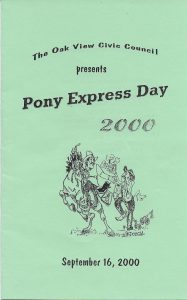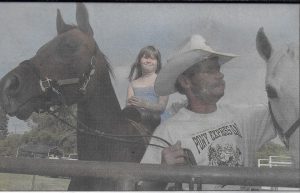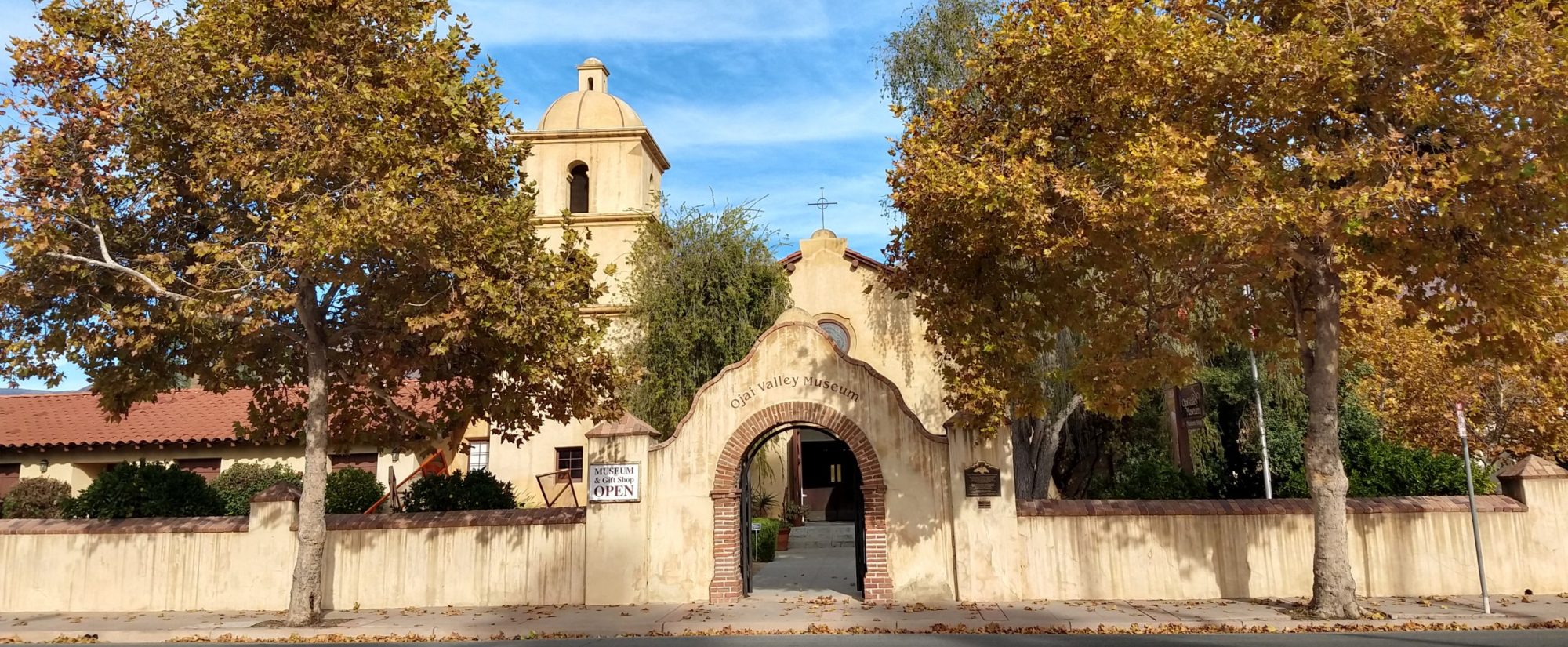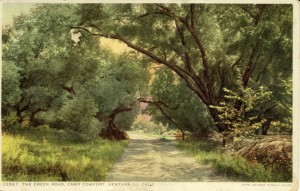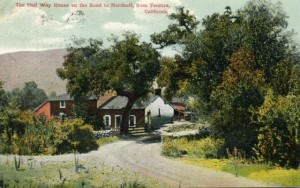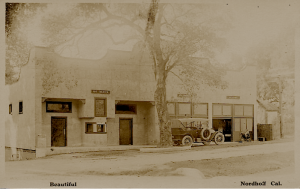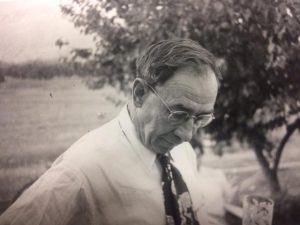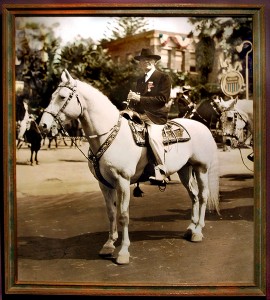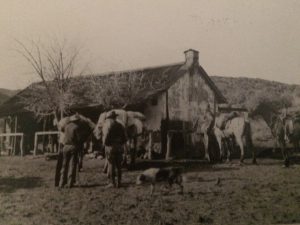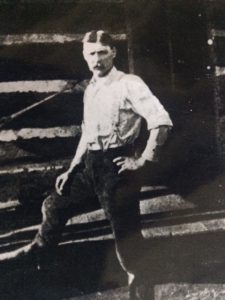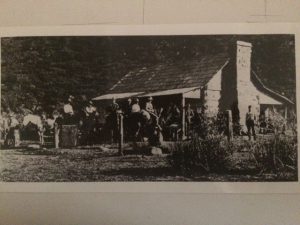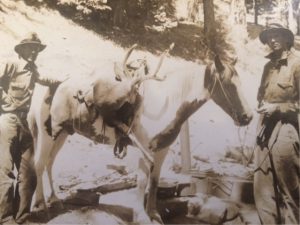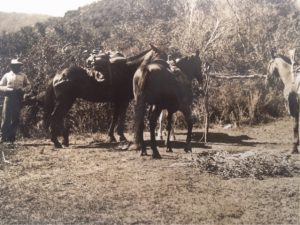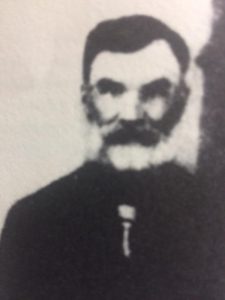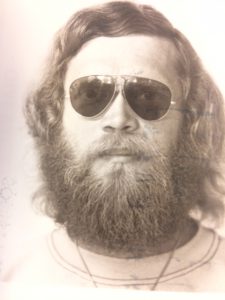The following article first appeared in the August 27, 1999 edition of the Ojai Valley News. It is reprinted here with their permission. All photos were added by the Ojai Valley Museum. Those photos are of items that the Oak View Civic Council possess and which Barbara Kennedy and Leanna Kennedy graciously arranged for the museum to photograph.
Pony Express Day will be held at Lake Casitas
by
Lenny Roberts
OVN staff reporter
Oak View’s Pony Express Day, the annual event staged to supplement operating costs for the community’s civic center, has found a permanent home at Lake Casitas.
Pony Express Day reflects the long-gone days when Oak View staged similar events in honor of the unincorporated community, which was a stop on California’s Pony Express route.
In 1995, members of the Oak View Civic Council created Pony Express Day while searching for alternative sources of income to support the recreational and other programs it offers.
After three years of moderate success at the Oak View Community Center, organizers moved the event to the lake in 1998 in an effort to lure more people from Ojai and beyond, according to honorary mayor Barbara Kennedy.
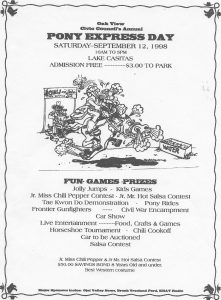
“Having it at the lake is a big advantage,” Kennedy said. “We’re expecting 200 to 300 entries for the car show alone and have already received calls from people in Los Angeles who want to enter.
“The Ojai Valley Chamber of Commerce is involved and hopefully we’ll get a lot of the Ojai people there.”
Last-minute entries for the 12-category car show, at $25 each, will be accepted until showtime. Trophies will be presented for first and second place, best of show and for the mayor’s favorite entry.
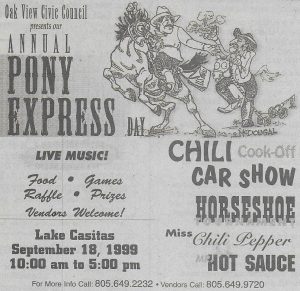
“That’s what they tell me — I just pick the one I like,” Kennedy said.
The Ojai Band, which recently concluded its 1999 Wednesday night summer concert series at the Libbey Park bandstand, is scheduled to perform, as are the crowd-pleasing Frontier Gunfighters who stage a series of comical mock shoot-outs against a western-style backdrop.
Also returning is emcee Rick Henderson, the Miss Chili Pepper and Mr. Hot Sauce competitions, the Bronk Vreeland Ojai Ford-sponsored International Chili Society chili cookoff, the Old Time Fiddlers, the Ojai Valley News-sponsored horseshoe tournament, KHAY Radio personalities with live periodic broadcasts and other entertainment yet to be determined.
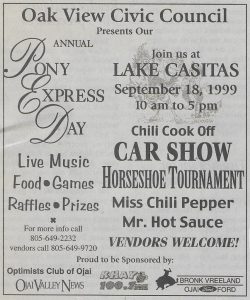
For kids of all ages, sno-cones will be provided by the Oak View Lions.
Pony rides and game booths featuring carnival-style competitions will be evident throughout the day, as will Sheriff Department exhibits, including Ojai’s K-9 unit and representatives from the Police Activities League (PAL) and the Ojai Valley’s DARE program.
Kennedy said the availability of booth space is running out for commercial and non-profit vendors. However, there are still some available at $25 for non-profit and $50 for commercial vendors.
There is no charge to attend Pony Express Day, but parking at Lake Casitas is $5 per car.
For additional information or entry forms for any of the events, call Kennedy at 649-2232 or Oak View Civic Council president Leanna Kennedy at 649-9720.
